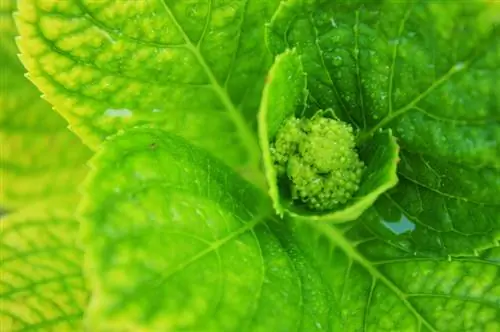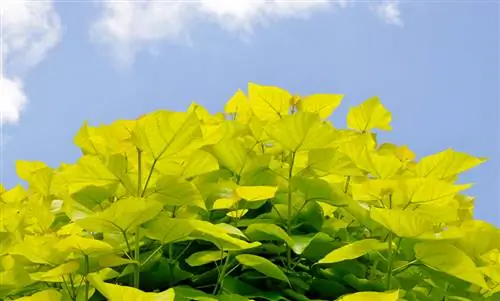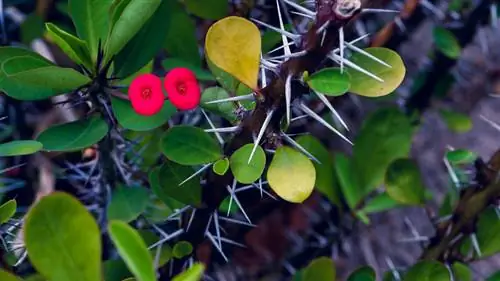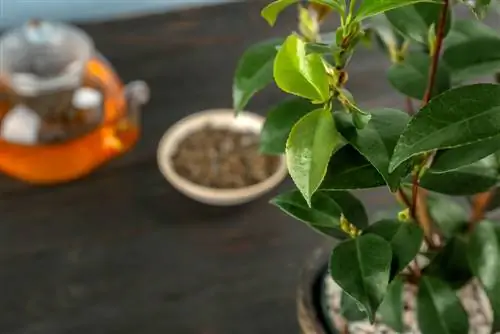- Author admin [email protected].
- Public 2023-12-16 16:46.
- Last modified 2025-01-23 11:20.
If the hydrangeas do not produce the desired blooms, there can be various reasons for this. In addition to incorrect pruning or frost damage, various other care errors or the wrong location can be responsible for the fact that the hydrangea, which is actually very flowery, only produces leaves.

Why isn't my hydrangea blooming?
If hydrangeas do not bloom, this may be due to incorrect location, lack of nutrients, insufficient water supply, incorrect pruning, frost damage or acclimatization of young plants. This can be remedied by suitable soil, sufficient watering, correct pruning and appropriate winter protection.
Young plants must first acclimatize
Hydrangeas often do not produce flowers in the first year after planting. The shrub initially puts all its energy into root formation and has to adapt to the changing site conditions. If you have a little patience with this beautiful shrub, it is guaranteed to reward you with abundant flowers in the second year.
Location and optimal neighbors
Like many flowering plants, the hydrangea has very specific requirements for its location. The hydrangeas will not bloom or only bloom very sparsely if the place where they are planted is too dark or there is an acute nutrient deficiency. A slightly shady place that is protected from the wind and offers the hydrangea plenty of space to grow is very suitable. A bare spot under a deep-rooted tree is ideal. The wood protects the hydrangea from wind, midday sun and heavy rain and thus promotes he althy growth.
An optimal supply of nutrients ensures abundance of flowers
Hydrangeas prefer a slightly acidic subsoil with a pH value of around 4.5. You can easily measure this yourself using sticks from garden shops and, if necessary, improve the soil by adding rhododendron soil.
Fertilize the hydrangea twice a year with a suitable fertilizer so that the plant can absorb all the nutrients and trace elements necessary for vigorous growth and abundant flower production.
Water regularly
The plant name Hydrangea means “water slurper” and refers to the hydrangea’s large water requirement. Just two days of drought can cause the hydrangea to wilt or not produce flowers. Therefore, always water the shrub when the top centimeters of soil feel dry. However, avoid waterlogging, to which the hydrangea is very sensitive.
Wrong cut
If you cut back the hydrangea too much in autumn, the flowers can fall victim to this care measure. Many hydrangea varieties form flower buds for the following spring in autumn, which are unintentionally removed during autumn pruning.
So be careful when you break out any dead flowers and, if possible, don't cut the hydrangea back in the fall. Just remove dead wood and damaged branches before the plants receive their winter protection.
Frost damage in rough locations
Despite the fact that almost all hydrangea varieties sold in stores are conditionally hardy, the plants require sufficient winter protection. In particular, you should not only pile up and mulch young plants, but also protect the hydrangea from frost and icy winds with a suitable fleece.
Tips & Tricks
Since hydrangeas are very loyal to the soil, you should plan the planting carefully. If the hydrangea feels comfortable, it hardly needs any care and produces abundant flowers in the second year at the latest.






